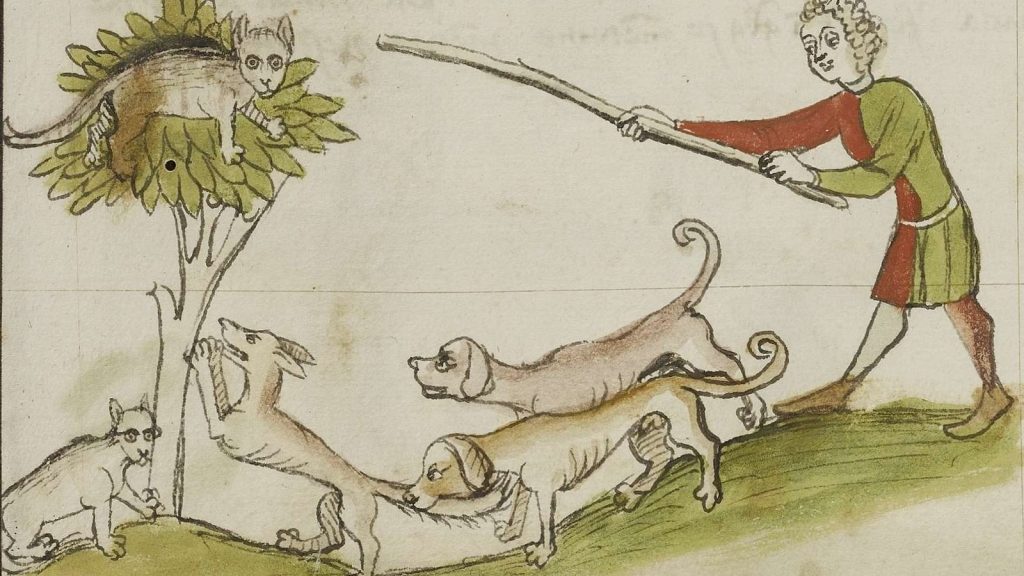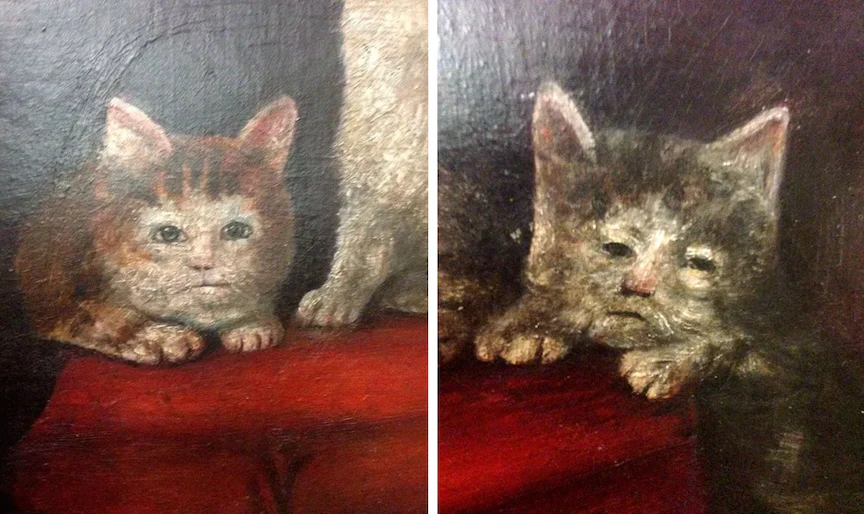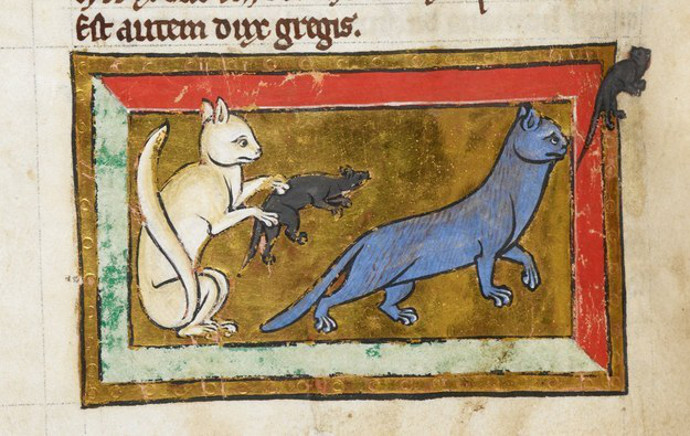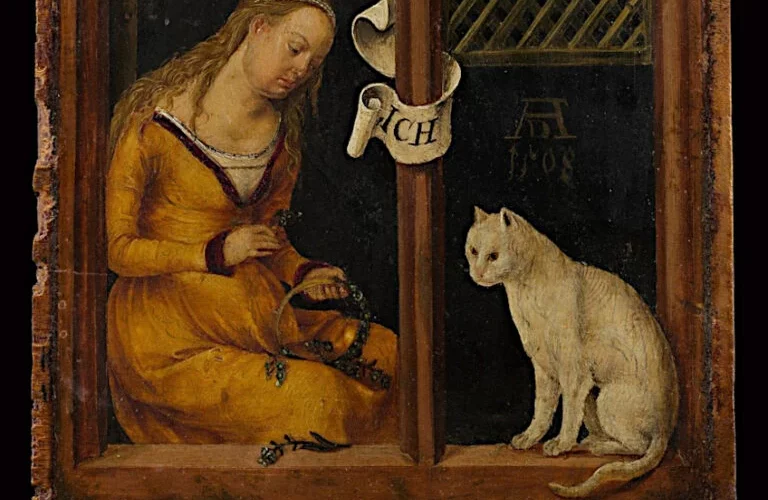In the shadow of the medieval period, during times when superstition and fear dominated, cats found themselves at the center of a deeply rooted misconception. While in ancient Egypt they were revered as divine creatures associated with the goddess Bastet, the Middle Ages saw a disturbing shift in the perception of cats, particularly black ones. During this time, cats became entwined in darker beliefs, viewed as creatures of the devil, and were often linked to witches and witchcraft. This association paved the way for centuries of fear and suspicion, casting cats in an unfortunate and dangerous light.
The Rise of Superstition
The medieval era, particularly in Europe, was marked by profound social and religious upheaval. With the spread of Christianity came the demonization of many pagan symbols and practices, including the reverence for animals like cats. Christianity, which positioned itself in direct opposition to earlier polytheistic beliefs, sought to purge what it considered to be “pagan” influences. This cultural and religious shift contributed to the negative portrayal of cats.
Cats’ nocturnal habits, stealthy movements, and sharp hunting skills were seen as unnatural. The fear of the unknown was pervasive, and the cat’s mysterious behavior often seemed to symbolize something sinister. As the Catholic Church began to exert greater influence across Europe, it became deeply involved in shaping how people viewed the supernatural. This period saw the rise of witch hunts, trials, and a heightened belief in the supernatural, which furthered the notion that certain animals, particularly cats, were in league with evil forces.
The cat’s seemingly enigmatic behavior—quietly slinking around at night, eyes gleaming in the dark—was easily misunderstood. In an era where ignorance about natural sciences was widespread, many believed that anything unusual or mysterious was inherently dangerous. Cats, with their agility and ability to slip in and out of shadows unnoticed, fit the bill as creatures with the potential for dark affiliations.

The Association with Witchcraft
The growing connection between cats and witchcraft in the medieval period is closely tied to the rise of witch hunts in Europe. During these times, witches were thought to be in league with the Devil, and many of them were accused of performing dark rituals, casting spells, and causing harm to their communities. The belief was widespread that witches could transform into animals, and among the most commonly mentioned were cats, especially black ones.
Cats, particularly black cats, came to be viewed as witches’ familiars. A familiar, in the folklore of the time, was believed to be a creature that served a witch, assisting her in magical rites and even communicating with spirits. The relationship between witches and their familiars was often thought to be one of intimate connection, with the familiar helping to channel the witch’s power. In many cases, witches were accused of having a close bond with their familiars, which were frequently believed to be either animals, such as cats, or even demons in animal form.
In the 16th and 17th centuries, during the height of the witch hunts, the belief in witchcraft and the power of familiars was so entrenched that people genuinely feared cats. There are records from witch trials that document allegations of witches using black cats in their rituals, and some were even believed to have been able to transform into cats themselves. This was especially prominent in areas like England, France, and the Holy Roman Empire, where witch trials and executions were rampant. The cat’s association with witches led to the persecution and killing of many innocent felines, who were blamed for the misfortune and ill health that plagued communities.
Black Cats: The Ultimate Symbol of Evil?
Among the various colors of cats, black cats became the most feared. The color black, already linked with death and the unknown, made black cats the most likely candidates to be seen as agents of evil. In medieval Europe, the fear of black cats reached extreme levels. People believed that seeing a black cat was an omen of impending doom or misfortune. In some regions, black cats were believed to be witches themselves in disguise, and others thought that if a black cat crossed your path, it would bring bad luck.
One of the most notorious instances of this belief occurred in 1233 when Pope Gregory IX issued a papal bull known as Vox in Rama, which declared that black cats were associated with Satanism and witchcraft. The papal decree led to widespread persecution of cats, with thousands of them being killed, particularly in France and Italy. This period marked one of the darkest chapters in the history of the cat, and their mystical connection to witches was solidified as a result.
The widespread fear of black cats as agents of evil grew to the point where people would often burn them in bonfires as part of religious rituals. These cats were seen as embodiments of the Devil, and their death was believed to rid the community of malevolent forces. Ironically, the mass killing of cats only led to greater rat infestations, which in turn contributed to the spread of diseases like the plague. This gruesome irony didn’t seem to diminish the deeply held belief that black cats were dangerous or that they represented something sinister.

The Reversal of Fate
While the medieval period was a time of darkness for cats, their fate began to shift during the Renaissance and beyond. As Europe moved into the Enlightenment era, many of the superstitions surrounding cats and witches began to lose their grip on society. Scientific advancements, along with a growing skepticism of the superstitions that had dominated the previous centuries, gradually led to a more rational view of the world.
The re-emergence of cats as symbols of good luck in the modern era helped to rehabilitate their image. In particular, black cats, once feared, began to be viewed as symbols of fortune and protection in many cultures. In Japan, for example, black cats are often seen as bringers of good luck, and in modern Western culture, black cats are frequently associated with Halloween, where they serve as symbols of mystery and enchantment rather than evil.
While medieval misconceptions about cats have largely dissipated, their connection to witches still lingers in popular culture. The image of the witch with her black cat remains a classic trope, although today, it is more often associated with Halloween fun and whimsical magic than with the dark fears of the past.

Conclusion
The historical journey of cats from revered creatures to demonized agents of witchcraft and back to beloved companions is a fascinating reflection of society’s changing beliefs. In medieval Europe, cats endured centuries of misconception, painted as sinister, witchly companions and embodiments of evil. Yet, as time passed, these misconceptions began to fade, and cats slowly regained their place as symbols of mystery, independence, and even good fortune. While the medieval fear of cats may have been based on ignorance and superstition, it remains a captivating chapter in the history of human-animal relationships, showcasing how deeply intertwined folklore, religion, and fear were in shaping the way we view the creatures with whom we share our world.
